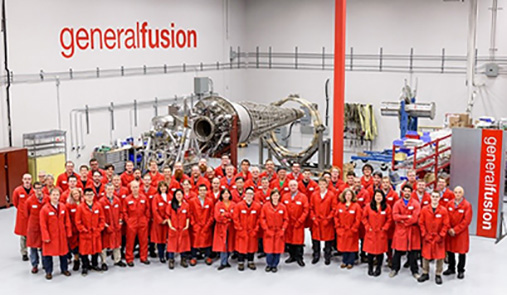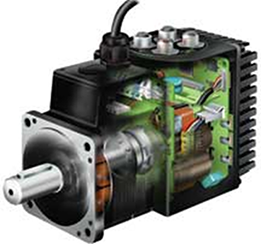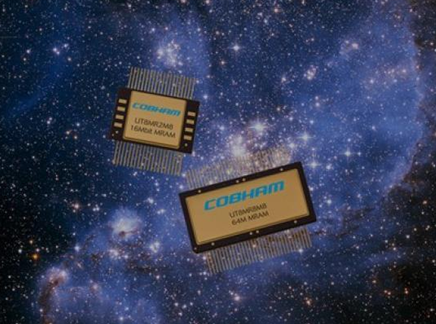
Fitting for the latest speed record in magnetization switching, new developments in spintronics technology continue to mount at a blistering pace as industry players and researchers stride toward achieving a universal, nonvolatile memory while putting to work the latest advancements.
Welcome to Spintronics Fest at Magnetics Magazine
Stay tuned for more!
- On the commercial side, magnetoresistive random access memory technology by spintronics company Everspin is making further inroads into space flight aboard MRAM devices from Cobham Advanced Electronic Solutions. Depicted above, they already have been designed into more than 144 space applications.
- Leading spintronics companies NVE and Avalanche Technology have also made noteworthy advancements lately, as reported in separate articles in Magnetics Magazine.
- On the research side, scientists at Tohoku University in Japan, have developed the world’s smallest high-performance magnetic tunnel junctions. Their work is expected to accelerate the advancement of ultrahigh-density, low-power, high-performance non-volatile memory for a variety of data-hungry applications such as internet-of-things connectivity, artificial intelligence and autonomous mobility.
- An international group of researchers led by the CNRS in France have developed a new technique that can switch magnetization in magnetic memory almost 100 times faster than current state-of-the-art spintronics.
In a recent case study, Cobham validates the versatility and performance for space application of Toggle MRAM jointly developed with Everspin. Cobham provides the aerospace industry with radiation hardened, highly reliable non-volatile memory that is designed for the rigors of space endurance and greater than 20-year retention across a -40° C to +105° C temperature range.
“Everspin’s MRAM technology has proven itself in the market with a production track record of high performance and endurance, providing superior non-volatile data retention to handle a variety of space mission-critical memory workloads,” said David Meyouhas, director of standard product marketing, space and semiconductor solutions, Cobham AES.
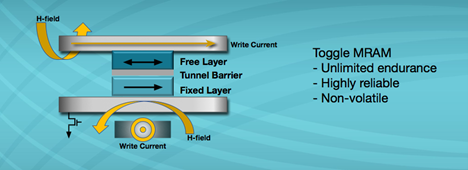
Toggle MRAM uses a 1 transistor, 1 MTJ cell to provide a simple, high-density memory. Everspin uses a patented Toggle cell design that delivers high reliability. Data are always non-volatile for 20-years at temperature. During a read, the pass transistor is activated and data is read by comparing the resistance of the cell to a reference device. During writes, the magnetic field from Write Line 1 and Write Line 2 writes the cell at the intersection of the two lines but does not disturb other cells on either line. Everspin MRAM products employ a one transistor, one magnetic tunnel junction (MTJ) memory cell for the storage element. The MTJ is composed of a fixed magnetic layer, a thin dielectric tunnel barrier and a free magnetic layer. When a bias is applied to the MTJ, electrons that are spin polarized by the magnetic layers traverse the dielectric barrier through a process known as tunneling.
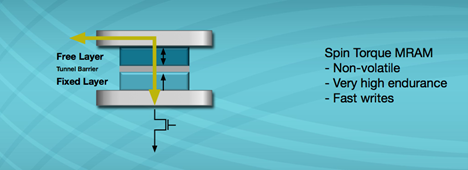
Everspin’s newest MRAM technology use spin torque transfer, which is the manipulation of the spin of electrons with a polarizing current, to establish the desired magnetic state of the free layer to program, or write, the bits in the memory array. It provides a significant reduction in switching energy compared to Toggle MRAM, and is highly scalable, enabling higher density memory products.
Its third generation of MRAM technology, it uses a perpendicular magnetic tunnel junction. The company has developed materials and stack designs with high perpendicular magnetic anisotropy which provides long data retention, small cell size, greater density, high endurance and low power. The 1Gb is the newest generation and additional products are planned which will utilize high speed serial interfaces for a wide range of embedded applications.
World’s smallest high-performance magnetic tunnel junctions
At Tohoku University, researchers led by current president Hideo Ohno report they have developed the world’s smallest high-performance magnetic tunnel junctions, measuring only 2.3 nanometers. The development of non-volatile spintronics memory (STT-MRAM) helps reduce the increasing power consumption in semiconductor device scaling. Crucial to integrating it in advanced integrated circuits is scaling magnetic tunnel junction, a core component, while improving its performance in data retention and write operation.
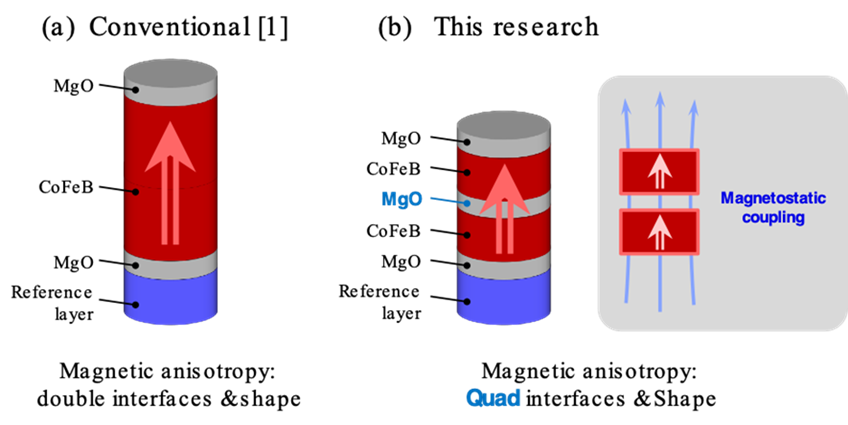
Building on their earlier work, the group employed a new structure, depicted on the right, that uses magnetostatically coupled multilayered ferromagnet and exhibited high data retention. “The performance proves the developed MTJs’ capability to work with the future-generation advanced integrated circuits,” said Butsurin Jinnai, first author of the study, “High-Performance Shape-Anisotropy Magnetic Tunnel Junctions down to 2.3 nm”, presented at the IEEE International Electron Devices Meeting.
Breaking speed record for switching magnetization
In France, the group led by CNRS developed a new technique that can switch magnetization in only six picoseconds, which is almost 100-times faster than current state-of-the-art spintronics – and is also highly efficient. A picosecond is one-trillionth of a second.
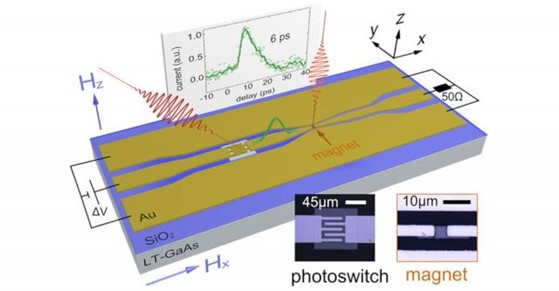
Magnetization switching is the process used to write information into magnetic memory. Spintronic devices represent promising alternatives to traditional computer chips. The work points toward development of ultrafast magnetic memory that would retain data even without power. The findings were published in a paper, “Spin–orbit torque switching of a ferromagnet with picosecond electrical pulses,” in the journal Nature Electronics.
For more info, see www.cobhamaes.com, www.everspin.com, www.tohoku.ac.jp, and www.cnrs.fr.

